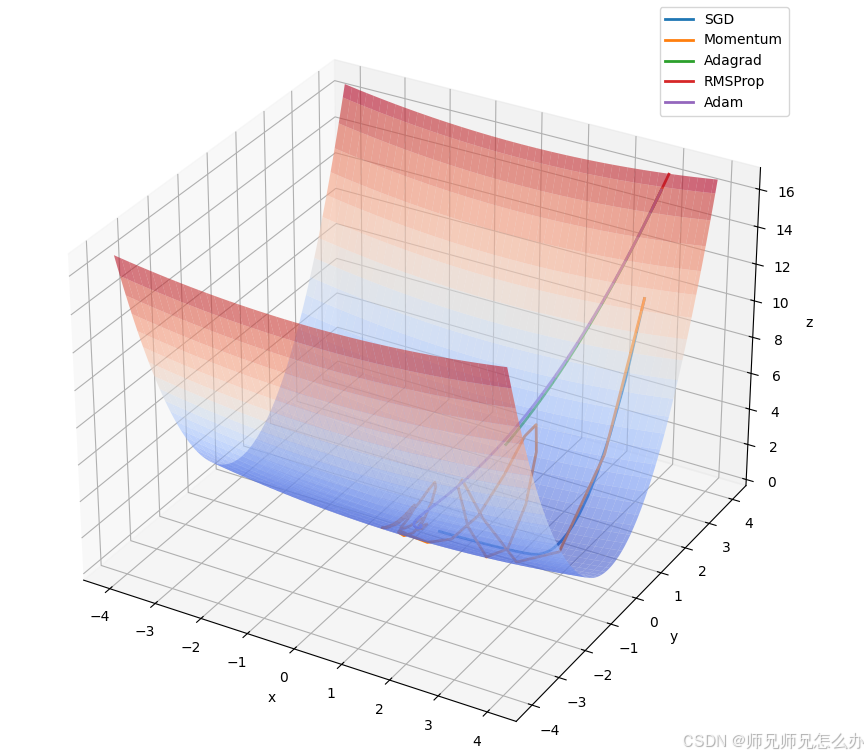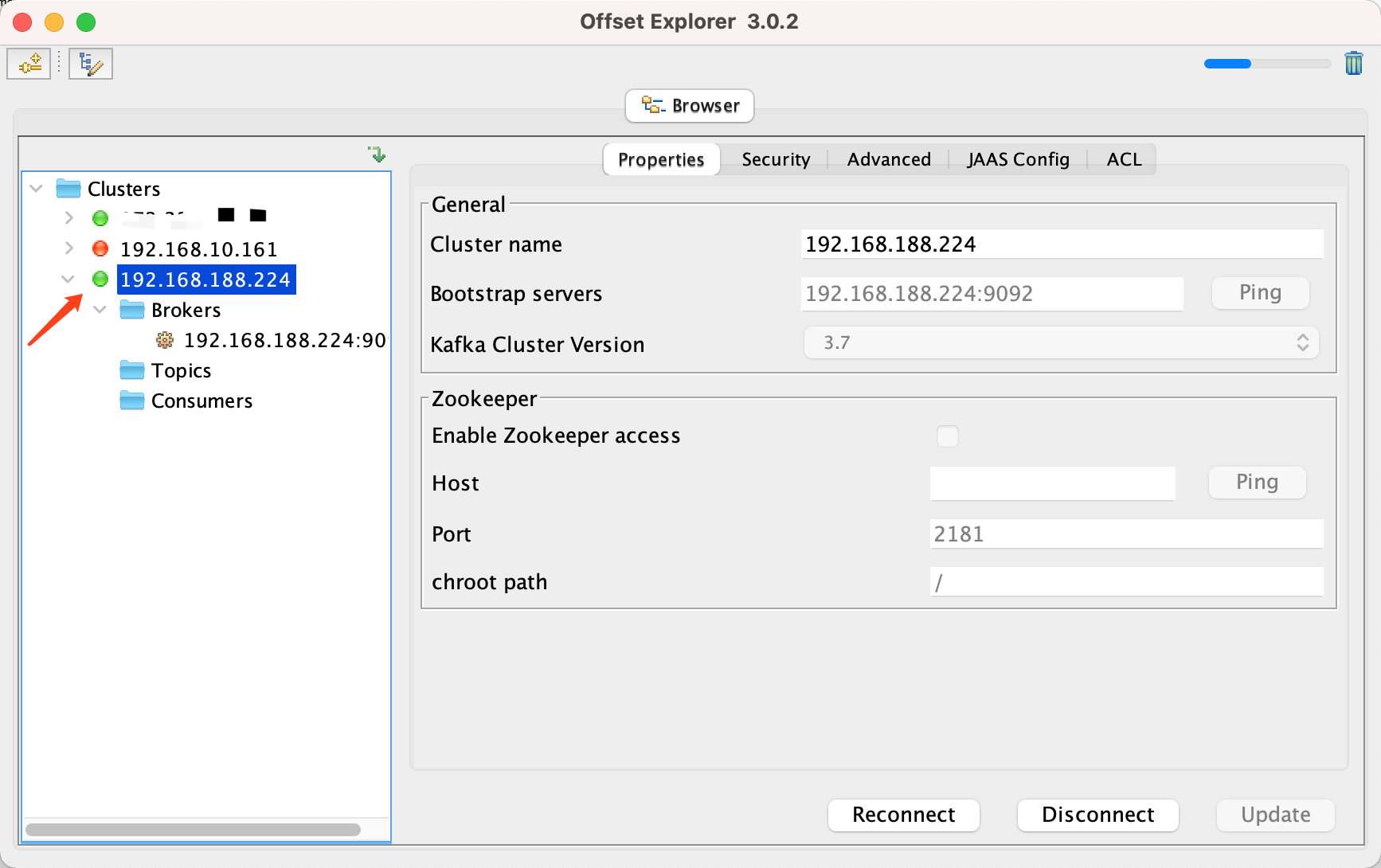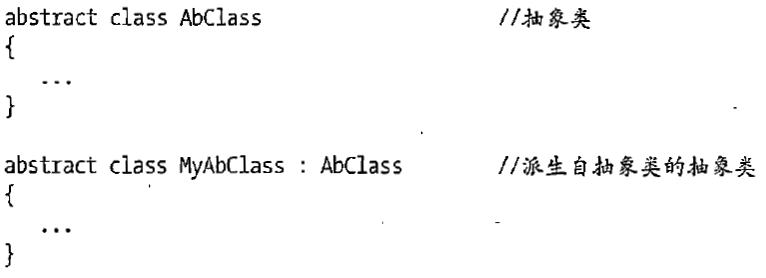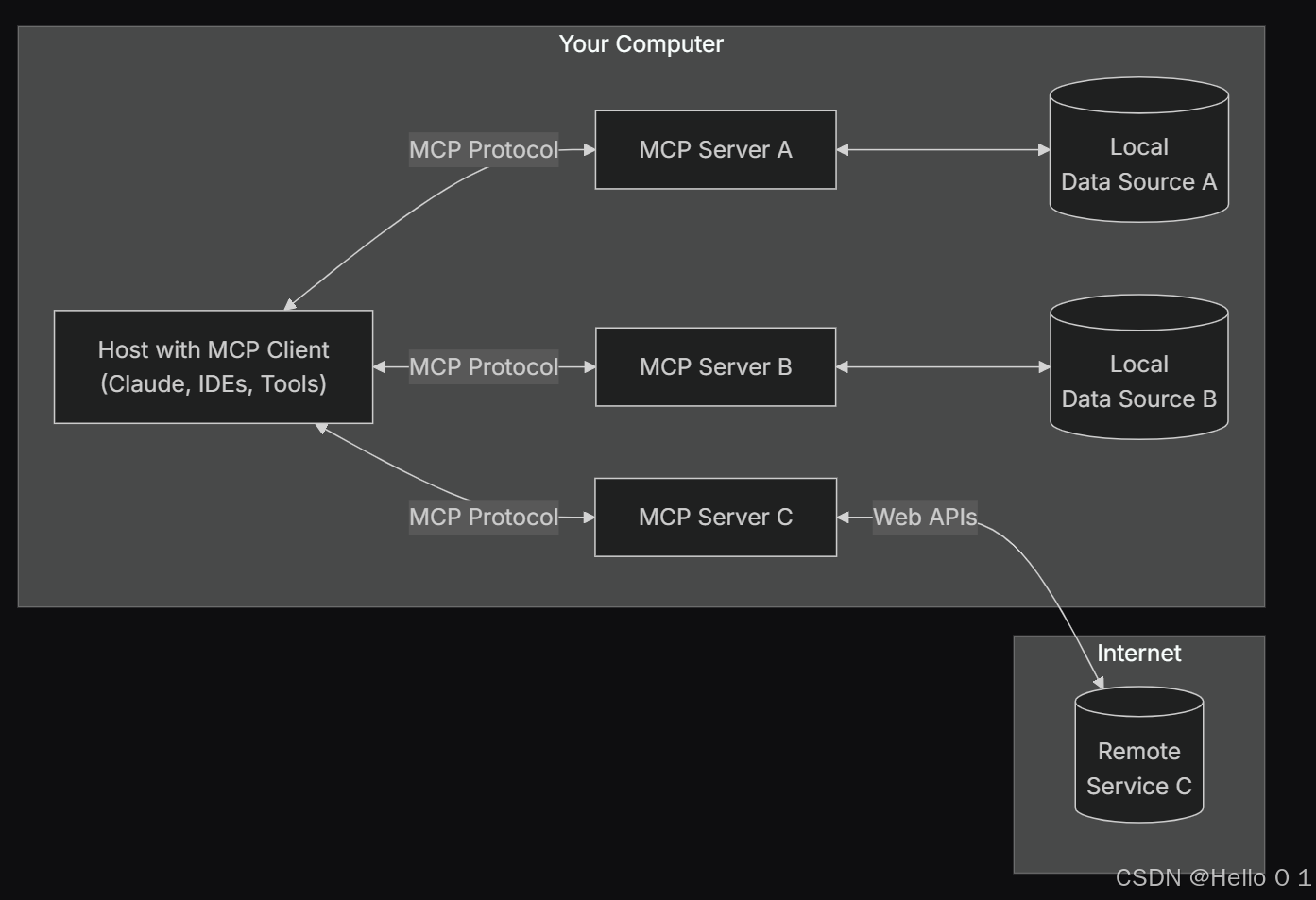使用java代码操作rabbitMQ收发消息
SpringAMQP
将来我们开发业务功能的时候,肯定不会在控制台收发消息,而是应该基于编程的方式。由于RabbitMQ采用了AMQP协议,因此它具备跨语言的特性。任何语言只要遵循AMQP协议收发消息,都可以与RabbitMQ交互。并且RabbitMQ官方也提供了各种不同语言的客户端。
但是,RabbitMQ官方提供的Java客户端编码相对复杂,一般生产环境下我们更多会结合Spring来使用。而Spring的官方刚好基于RabbitMQ提供了这样一套消息收发的模板工具:SpringAMQP。并且还基于SpringBoot对其实现了自动装配,使用起来非常方便。
SpringAmqp的官方地址:
Spring AMQP
SpringAMQP提供了三个功能:
- 自动声明队列、交换机及其绑定关系
- 基于注解的监听器模式,异步接收消息
- 封装了RabbitTemplate工具,用于发送消息
快速入门
别忘了在我们的项目中,引入spring amqp的依赖。
<dependencies><dependency><groupId>org.projectlombok</groupId><artifactId>lombok</artifactId></dependency><!--AMQP依赖,包含RabbitMQ--><dependency><groupId>org.springframework.boot</groupId><artifactId>spring-boot-starter-amqp</artifactId></dependency><!--单元测试--><dependency><groupId>org.springframework.boot</groupId><artifactId>spring-boot-starter-test</artifactId></dependency>
</dependencies>在之前的案例中,我们都是经过交换机发送消息到队列,不过有时候为了测试方便,我们也可以直接向队列发送消息,跳过交换机。
在入门案例中,我们就演示这样的简单模型,如图:

也就是
- publisher直接发送消息到队列
- 消费者监听并处理队列中的消息
注意:这种模式一般测试使用,很少在生产中使用。
为了方便测试,我们在rabbitMQ控制台,创建名为 simple.queue 的队列。

添加队列后查看

接下来,我们就可以利用Java代码收发消息了。
消息发送
在我们的项目application.yml 中 添加关于rabbitmq的配置信息。
spring:rabbitmq:host: 123.56.247.70 # 你的虚拟机IPport: 5672 # rabbitMQ端口virtual-host: /sde # 虚拟机名称username: sundaoen # 用户名password: 8888888888 # 密码
编写测试类
在我们项目的publisher中创建测试类,并且利用 RabbitTemplate 发送消息。

@SpringBootTest
public class TestSendMessage {@Autowiredprivate RabbitTemplate rabbitTemplate;@Testpublic void testSimpleQueue(){// 1 队列名称String queueName = "simple.queue";// 2 消息String message = "hello simple.queue";// 3 发送消息rabbitTemplate.convertAndSend(queueName,message);}
}打开控制台,可以看到消息已经发送到队列中:

看看消息内容

接下来,我们再来实现消息接收。
消息接收
同样的道理,也是先配置MQ地址。在application.yml 中
spring:rabbitmq:host: 123.56.247.70 # 你的虚拟机IPport: 5672 # rabbitMQ端口virtual-host: /sde # 虚拟机名称username: sundaoen # 用户名password: 8888888888 # 密码在consumer服务中编写监听器类,并利用@RabbitListener实现消息的接收。
@Slf4j
@Component
public class SimpleQueueListener {/*利用@RabbitListener注解,可以监听到对应队列的消息一旦监听的队列有消息,就会回调当前方法,在方法中接收消息并消费处理消息*/@RabbitListener(queues = "simple.queue")public void listenerSimpleQueue(String msg){System.out.println("SpringRabbitListener 监听到 simple.queue 队列中的消息是:" + msg);}
}
WorkQueue模型
Work queues,任务模型。简单来说就是让多个消费者绑定到一个队列,共同消费队列中的消息。

当消息处理比较耗时的时候,可能生产消息的速度会远远大于消息的消费速度。长此以往,消息就会堆积越来越多,无法及时处理。
此时就可以使用work 模型,多个消费者共同处理消息处理,消息处理的速度就能大大提高了。
接下来,我们就来模拟这样的场景。
首先,我们在控制台创建一个新的队列,命名为work.queue:

添加后的效果

消息发送
这次我们循环发送,模拟大量消息堆积现象。
在publisher服务中的WorkQueueSendTest类中添加一个测试方法:

@SpringBootTest
public class WorkQueueSendTest {@Autowiredprivate RabbitTemplate rabbitTemplate;@Testpublic void testSendWorkQueue() throws InterruptedException {// 1 队列名称String queueName = "work.queue";// 2 消息String message = "hello work.queue-";// 3 发送消息for (int i = 1; i <= 50; i++) {// 每隔20毫秒发送一条消息,相当于一秒发送50条消息。rabbitTemplate.convertAndSend(queueName,message + i);Thread.sleep(20);}}
}可以看到在work.queue 队列中有50条消息。

消息接收
要模拟多个消费者绑定同一个队列,我们在consumer服务中的,listener包中。新增WorkQueueListener类并添加2个新的方法:

@Slf4j
@Component
public class WorkQueueListener {/*实现两个消费 work.queue的监听消费消息的方法;一个方法消费后沉睡 20毫秒;一个消息消费后沉睡200毫秒;*/@RabbitListener(queues = "work.queue")public void listenerWorkQueue1(String msg){System.out.println("消费者1接收到消息" + msg +" 时间:"+ LocalDateTime.now());try {Thread.sleep(20); // 沉睡20毫秒 1秒是1000毫秒等于1秒处理50条消息} catch (InterruptedException e) {e.printStackTrace();}}@RabbitListener(queues = "work.queue")public void listenerWorkQueue2(String msg){System.out.println("***消费者2接收到消息" + msg +" 时间:"+ LocalDateTime.now());try {Thread.sleep(200); // 沉睡200毫秒 1秒是1000毫秒等于1秒处理5条消息} catch (InterruptedException e) {e.printStackTrace();}}}注意到这两消费者,都设置了Thead.sleep,模拟任务耗时:
- 消费者1 sleep了20毫秒,相当于每秒钟处理50个消息
- 消费者2 sleep了200毫秒,相当于每秒处理5个消息
测试看结果
消费者1接收到消息hello work.queue-1 时间:2025-02-05T14:53:00.928905400
***消费者2接收到消息hello work.queue-2 时间:2025-02-05T14:53:00.947629900
消费者1接收到消息hello work.queue-3 时间:2025-02-05T14:53:00.977764800
消费者1接收到消息hello work.queue-5 时间:2025-02-05T14:53:01.039608
消费者1接收到消息hello work.queue-7 时间:2025-02-05T14:53:01.101242200
消费者1接收到消息hello work.queue-9 时间:2025-02-05T14:53:01.160396600
***消费者2接收到消息hello work.queue-4 时间:2025-02-05T14:53:01.161396900
消费者1接收到消息hello work.queue-11 时间:2025-02-05T14:53:01.231704200
消费者1接收到消息hello work.queue-13 时间:2025-02-05T14:53:01.281879300
消费者1接收到消息hello work.queue-15 时间:2025-02-05T14:53:01.347333400
***消费者2接收到消息hello work.queue-6 时间:2025-02-05T14:53:01.376528100
消费者1接收到消息hello work.queue-17 时间:2025-02-05T14:53:01.407569700
消费者1接收到消息hello work.queue-19 时间:2025-02-05T14:53:01.464497900
消费者1接收到消息hello work.queue-21 时间:2025-02-05T14:53:01.525121200
消费者1接收到消息hello work.queue-23 时间:2025-02-05T14:53:01.587589500
***消费者2接收到消息hello work.queue-8 时间:2025-02-05T14:53:01.589591300
消费者1接收到消息hello work.queue-25 时间:2025-02-05T14:53:01.647549500
消费者1接收到消息hello work.queue-27 时间:2025-02-05T14:53:01.709757900
消费者1接收到消息hello work.queue-29 时间:2025-02-05T14:53:01.768879300
***消费者2接收到消息hello work.queue-10 时间:2025-02-05T14:53:01.801437800
消费者1接收到消息hello work.queue-31 时间:2025-02-05T14:53:01.829539900
消费者1接收到消息hello work.queue-33 时间:2025-02-05T14:53:01.895907400
消费者1接收到消息hello work.queue-35 时间:2025-02-05T14:53:01.950810
消费者1接收到消息hello work.queue-37 时间:2025-02-05T14:53:02.011575
***消费者2接收到消息hello work.queue-12 时间:2025-02-05T14:53:02.014526300
消费者1接收到消息hello work.queue-39 时间:2025-02-05T14:53:02.073814400
消费者1接收到消息hello work.queue-41 时间:2025-02-05T14:53:02.142812400
消费者1接收到消息hello work.queue-43 时间:2025-02-05T14:53:02.199522100
***消费者2接收到消息hello work.queue-14 时间:2025-02-05T14:53:02.228114600
消费者1接收到消息hello work.queue-45 时间:2025-02-05T14:53:02.255591100
消费者1接收到消息hello work.queue-47 时间:2025-02-05T14:53:02.315954800
消费者1接收到消息hello work.queue-49 时间:2025-02-05T14:53:02.377632900
***消费者2接收到消息hello work.queue-16 时间:2025-02-05T14:53:02.440855300
***消费者2接收到消息hello work.queue-18 时间:2025-02-05T14:53:02.654015100
***消费者2接收到消息hello work.queue-20 时间:2025-02-05T14:53:02.867783300
***消费者2接收到消息hello work.queue-22 时间:2025-02-05T14:53:03.080905400
***消费者2接收到消息hello work.queue-24 时间:2025-02-05T14:53:03.296731200
***消费者2接收到消息hello work.queue-26 时间:2025-02-05T14:53:03.512099400
***消费者2接收到消息hello work.queue-28 时间:2025-02-05T14:53:03.725353500
***消费者2接收到消息hello work.queue-30 时间:2025-02-05T14:53:03.939706400
***消费者2接收到消息hello work.queue-32 时间:2025-02-05T14:53:04.152588100
***消费者2接收到消息hello work.queue-34 时间:2025-02-05T14:53:04.367337200
***消费者2接收到消息hello work.queue-36 时间:2025-02-05T14:53:04.581549200
***消费者2接收到消息hello work.queue-38 时间:2025-02-05T14:53:04.793774100
***消费者2接收到消息hello work.queue-40 时间:2025-02-05T14:53:05.006103400
***消费者2接收到消息hello work.queue-42 时间:2025-02-05T14:53:05.220121400
***消费者2接收到消息hello work.queue-44 时间:2025-02-05T14:53:05.433498300
***消费者2接收到消息hello work.queue-46 时间:2025-02-05T14:53:05.645486500
***消费者2接收到消息hello work.queue-48 时间:2025-02-05T14:53:05.856447600
***消费者2接收到消息hello work.queue-50 时间:2025-02-05T14:53:06.065771700可以看到消费者1和消费者2竟然每人消费了25条消息:
- 消费者1很快完成了自己的25条消息
- 消费者2却在缓慢的处理自己的25条消息。
也就是说消息是平均分配给每个消费者,并没有考虑到消费者的处理能力。导致1个消费者空闲,另一个消费者忙的不可开交。没有充分利用每一个消费者的能力,最终消息处理的耗时远远超过了1秒。这样显然是有问题的。
能者多劳
更改一下我们的配置文件,就好了。更改的是consumer消费者服务 application.yml 配置文件。
spring:rabbitmq:listener:simple:prefetch: 1 # 每次只能获取一条消息,处理完成才能获取下一个消息
重启项目,再次测试看结果。
消费者1接收到消息hello work.queue-1 时间:2025-02-05T16:19:40.610672600
***消费者2接收到消息hello work.queue-2 时间:2025-02-05T16:19:40.635078900
消费者1接收到消息hello work.queue-3 时间:2025-02-05T16:19:40.668399800
消费者1接收到消息hello work.queue-4 时间:2025-02-05T16:19:40.733468200
消费者1接收到消息hello work.queue-5 时间:2025-02-05T16:19:40.789432700
消费者1接收到消息hello work.queue-6 时间:2025-02-05T16:19:40.849740
***消费者2接收到消息hello work.queue-7 时间:2025-02-05T16:19:40.865255600
消费者1接收到消息hello work.queue-8 时间:2025-02-05T16:19:40.915186600
消费者1接收到消息hello work.queue-9 时间:2025-02-05T16:19:40.975302
消费者1接收到消息hello work.queue-10 时间:2025-02-05T16:19:41.035238100
消费者1接收到消息hello work.queue-11 时间:2025-02-05T16:19:41.098149900
***消费者2接收到消息hello work.queue-12 时间:2025-02-05T16:19:41.110162300
消费者1接收到消息hello work.queue-13 时间:2025-02-05T16:19:41.158752
消费者1接收到消息hello work.queue-14 时间:2025-02-05T16:19:41.214050800
消费者1接收到消息hello work.queue-15 时间:2025-02-05T16:19:41.275456500
消费者1接收到消息hello work.queue-16 时间:2025-02-05T16:19:41.338280900
***消费者2接收到消息hello work.queue-17 时间:2025-02-05T16:19:41.354040400
消费者1接收到消息hello work.queue-18 时间:2025-02-05T16:19:41.397333900
消费者1接收到消息hello work.queue-19 时间:2025-02-05T16:19:41.459536100
消费者1接收到消息hello work.queue-20 时间:2025-02-05T16:19:41.522984800
消费者1接收到消息hello work.queue-21 时间:2025-02-05T16:19:41.589369900
***消费者2接收到消息hello work.queue-22 时间:2025-02-05T16:19:41.595472400
消费者1接收到消息hello work.queue-23 时间:2025-02-05T16:19:41.639076100
消费者1接收到消息hello work.queue-24 时间:2025-02-05T16:19:41.702762100
消费者1接收到消息hello work.queue-25 时间:2025-02-05T16:19:41.761438700
消费者1接收到消息hello work.queue-26 时间:2025-02-05T16:19:41.823348300
***消费者2接收到消息hello work.queue-27 时间:2025-02-05T16:19:41.836398700
消费者1接收到消息hello work.queue-28 时间:2025-02-05T16:19:41.894946600
消费者1接收到消息hello work.queue-29 时间:2025-02-05T16:19:41.962451900
消费者1接收到消息hello work.queue-30 时间:2025-02-05T16:19:42.020227900
***消费者2接收到消息hello work.queue-31 时间:2025-02-05T16:19:42.066749100
消费者1接收到消息hello work.queue-32 时间:2025-02-05T16:19:42.080599800
消费者1接收到消息hello work.queue-33 时间:2025-02-05T16:19:42.143280700
消费者1接收到消息hello work.queue-34 时间:2025-02-05T16:19:42.204272700
消费者1接收到消息hello work.queue-35 时间:2025-02-05T16:19:42.270407300
***消费者2接收到消息hello work.queue-36 时间:2025-02-05T16:19:42.309818400
消费者1接收到消息hello work.queue-37 时间:2025-02-05T16:19:42.332003100
消费者1接收到消息hello work.queue-38 时间:2025-02-05T16:19:42.391974600
消费者1接收到消息hello work.queue-39 时间:2025-02-05T16:19:42.454012300
消费者1接收到消息hello work.queue-40 时间:2025-02-05T16:19:42.509398500
***消费者2接收到消息hello work.queue-41 时间:2025-02-05T16:19:42.555230800
消费者1接收到消息hello work.queue-42 时间:2025-02-05T16:19:42.570220
消费者1接收到消息hello work.queue-43 时间:2025-02-05T16:19:42.629378200
消费者1接收到消息hello work.queue-44 时间:2025-02-05T16:19:42.690519600
消费者1接收到消息hello work.queue-45 时间:2025-02-05T16:19:42.756214500
***消费者2接收到消息hello work.queue-46 时间:2025-02-05T16:19:42.797371400
消费者1接收到消息hello work.queue-47 时间:2025-02-05T16:19:42.813034800
消费者1接收到消息hello work.queue-48 时间:2025-02-05T16:19:42.876228100
消费者1接收到消息hello work.queue-49 时间:2025-02-05T16:19:42.939391
消费者1接收到消息hello work.queue-50 时间:2025-02-05T16:19:42.998590500可以发现,由于消费者1处理速度较快,所以处理了更多的消息;消费者2处理速度较慢,只处理了7条消息。而最终总的执行耗时也在1秒左右,大大提升。
正所谓能者多劳,这样充分利用了每一个消费者的处理能力,可以有效避免消息积压问题。
总结
Work模型的使用:
- 多个消费者绑定到一个队列,同一条消息只会被一个消费者处理
- 通过设置prefetch来控制消费者预取的消息数量
交换机类型
在之前的两个测试案例中,都没有交换机Exchange,生产者直接发送消息到队列。而一旦引入交换机,消息发送的模式会有很大变化:

可以看到,在订阅模型中,多了一个exchange角色,而且过程略有变化:
- Publisher:生产者,不再发送消息到队列中,而是发给交换机
- Exchange:交换机,一方面,接收生产者发送的消息。另一方面,知道如何处理消息,例如递交给某个特别队列、递交给所有队列、或是将消息丢弃。到底如何操作,取决于Exchange的类型。
- Queue:消息队列也与以前一样,接收消息、缓存消息。不过队列一定要与交换机绑定。
- Consumer:消费者,与以前一样,订阅队列,没有变化
Exchange(交换机)只负责转发消息,不具备存储消息的能力,因此如果没有任何队列与Exchange绑定,或者没有符合路由规则的队列,那么消息会丢失!
交换机的类型有四种:
- Fanout:广播,将消息交给所有绑定到交换机的队列。我们最早在控制台使用的正是Fanout交换机
- Direct:订阅,基于RoutingKey(路由key)发送给订阅了消息的队列
- Topic:通配符订阅,与Direct类似,只不过RoutingKey可以使用通配符
- Headers:头匹配,基于MQ的消息头匹配,用的较少
文档中,我们讲解前面的三种交换机模式。
Fanout交换机
Fanout,英文翻译是扇出,我觉得在MQ中叫广播更合适。
在广播模式下,消息发送流程是这样的:

- 1) 可以有多个队列
- 2) 每个队列都要绑定到Exchange(交换机)
- 3) 生产者发送的消息,只能发送到交换机
- 4) 交换机把消息发送给绑定过的所有队列
- 5) 订阅队列的消费者都能拿到消息
我们的计划是这样的:

- 创建一个名为test.fanout的交换机,类型是Fanout
- 创建两个队列fanout.queue1和fanout.queue2,绑定到交换机test.fanout
声明交换机和队列
在控制台创建 fanout.queue1 和 fanout.queue2 两个队列。

然后在创建一个交换机

绑定两个队列到交换机

消息发送
在publisher服务的FanoutExchangeTest类中添加测试方法:
@SpringBootTest
public class FanoutExchangeTest {@Autowiredprivate RabbitTemplate rabbitTemplate;/*测试 fanout exchange;向 test.fanout 交换机发送消息,消息内容为 hello everyone!,会发送到所有绑定到该交换机的队列*/@Testpublic void testSendFanoutExchange(){// 1 交换机名称String exchangeName = "test.fanout";// 2 消息String msg = "hello everyone!";// 3 发送消息rabbitTemplate.convertAndSend(exchangeName,"",msg);}
}注意:上述的 convertAndSend 方法的第2个参数:路由key 因为没有绑定,所以可以指定为空
看看rabbitMQ的控制台

消息接收
在consumer服务中添加FanoutQueueListener类,并新增两个方法,监听队列中的消息 作为消费者。
@Slf4j
@Component
public class FanoutQueueListener {/*** 监听fanout.queue1队列*/@RabbitListener(queues = "fanout.queue1")public void listenFanoutQueue1(String msg){System.out.println("【消费者1】 接收到消息:" + msg);}/*** 监听fanout.queue2队列*/@RabbitListener(queues = "fanout.queue2")public void listenFanoutQueue2(String msg){System.out.println("【消费者2】 接收到消息:" + msg);}
}
总结
交换机的作用是什么?
- 接收publisher发送的消息
- 将消息按照规则路由到与之绑定的队列
- 不能缓存消息,路由失败,消息丢失
- FanoutExchange的会将消息路由到每个绑定的队列
Direct交换机
在Fanout模式中,一条消息,会被所有订阅的队列都消费。但是,在某些场景下,我们希望不同的消息被不同的队列消费。这时就要用到Direct类型的Exchange。

在Direct模型下:
- 队列与交换机的绑定,不能是任意绑定了,而是要指定一个RoutingKey(路由key)
- 消息的发送方在向 Exchange发送消息时,也必须指定消息的 RoutingKey。
- Exchange不再把消息交给每一个绑定的队列,而是根据消息的Routing Key进行判断,只有队列的Routingkey与消息的 Routing key完全一致,才会接收到消息。
案例需求如图:

- 声明一个名为test.direct的交换机
- 声明队列direct.queue1,绑定hmall.direct,bindingKey为blud和red
- 声明队列direct.queue2,绑定hmall.direct,bindingKey为yellow和red
- 在consumer服务中,编写两个消费者方法,分别监听direct.queue1和direct.queue2
- 在publisher中编写测试方法,向test.direct发送消息
声明队列和交换机
首先在控制台声明两个队列direct.queue1和direct.queue2,这里不再展示过程:

然后声明一个direct类型的交换机,命名为test.direct:

然后使用red和blue作为key,绑定direct.queue1到test.direct:


绑定diretc.queue2


看看最后的绑定关系

消息发送
在publish服务中,新增 DirectExchangeTest 类发送消息。
@SpringBootTest
public class DirectExchangeTest {@Autowiredprivate RabbitTemplate rabbitTemplate;/*测试 direct exchange;向 test.direct 交换机发送消息,会根据路由key发送到所有绑定到该交换机的队列*/@Testpublic void testSendDirectExchange(){// 1 交换机String exchangeName = "test.direct";// 2 消息String msg = "这是一条消息,并且路由key是red 红色。";// 3 发送消息 路由key为redrabbitTemplate.convertAndSend(exchangeName,"red",msg);//改变下消息msg = "这是一条消息,并且路由key是blue 蓝色。";rabbitTemplate.convertAndSend(exchangeName,"blue",msg);}}看看rabbitMQ控制台,查看消息是否成功发送。

消息接收
在consumer服务中,添加 DirectQueueListener 类,并在里面编写两个方法。
@Slf4j
@Component
public class DirectQueueListener {/*** 监听direct.queue1队列*/@RabbitListener(queues = "direct.queue1")public void listenDirectQueue1(String msg){log.info("【消费者1】接收到消息:{}",msg);}/*** 监听direct.queue2队列* @param msg*/@RabbitListener(queues = "direct.queue2")public void listenDirectQueue2(String msg){log.info("【消费者2】接收到消息:{}",msg);}
}
由于 test.redirect 交换机绑定的两个队列的路由key有red;所以指定了路由key为red的消息能被两个消费者都收到。
而路由key为 blue 的队列只有direct.queue1;所以只有监听这个队列的 消费者1 能够接收到消息:
总结
描述下Direct交换机与Fanout交换机的差异?
- Fanout交换机将消息路由给每一个与之绑定的队列
- Direct交换机根据RoutingKey判断路由给哪个队列
- 如果多个队列具有相同的RoutingKey,则与Fanout功能类似
Topic交换机
Topic类型交换机
Topic类型的Exchange与Direct相比,都是可以根据RoutingKey把消息路由到不同的队列。
只不过Topic类型Exchange可以让队列在绑定RoutingKey 的时候使用通配符!
RoutingKey 一般都是有一个或多个单词组成,多个单词之间以.分割,例如: item.insert
通配符规则:
- #:匹配一个或多个词
- *:匹配不多不少恰好1个词
举例:
- item.#:能够匹配item.spu.insert 或者 item.spu
- item.*:只能匹配item.spu
图示:

假如此时publisher发送的消息使用的RoutingKey共有四种:
- china.news代表有中国的新闻消息;
- china.weather 代表中国的天气消息;
- japan.news 则代表日本新闻
- japan.weather 代表日本的天气消息;
解释:
- topic.queue1:绑定的是china.# ,凡是以 china.开头的routing key 都会被匹配到,包括:
-
- china.news
- china.weather
- topic.queue2:绑定的是#.news ,凡是以 .news结尾的 routing key 都会被匹配。包括:
-
- china.news
- japan.news
接下来,我们就按照上图所示,来演示一下Topic交换机的用法。
首先,在控制台按照图示例子创建队列、交换机,并利用通配符绑定队列和交换机。此处步骤略。最终结果如下:
创建交换机和队列

创建test.topic 交换机

看看效果

给test.topic 交换机绑定两个队列


消息发送
在consumer服务中,新增 TopicExchangeTest类 发送消息。
@SpringBootTest
public class TopicExchangeTest {@Autowiredprivate RabbitTemplate rabbitTemplate;@Testpublic void testSendTopicExchange(){// 1 交换机String exchangeName = "test.topic";// 2 消息String msg = "我是TopicExchange交换机的消息,路由key是 china.news";// 3 发送路由key为 china.news 的消息rabbitTemplate.convertAndSend(exchangeName,"china.news",msg);}
}
消息接收
在consumer服务中,添加 TopicExchangeListener 类,编写两个方法监听消息。
@Slf4j
@Component
public class TopicExchangeListener {/*** 监听topic.queue1队列*/@RabbitListener(queues = "topic.queue1")public void listenTopicQueue1(String msg) {log.info("【消费者1】监听到消息:{}", msg);}/*** 监听topic.queue2队列*/@RabbitListener(queues ="topic.queue2")public void listenTopicQueue2(String msg) {log.info("【消费者2】监听到消息:{}", msg);}}
总结
描述下Direct交换机与Topic交换机的差异?
- Topic交换机接收的消息RoutingKey必须是多个单词,以 . 分割
- Topic交换机与队列绑定时的RoutingKey可以指定通配符
- #:代表0个或多个词
- *:代表1个词
代码声明交换机和队列
在之前我们都是基于RabbitMQ控制台来创建队列、交换机。但是在实际开发时,队列和交换机是程序员定义的,将来项目上线,又要交给运维去创建。那么程序员就需要把程序中运行的所有队列和交换机都写下来,交给运维。在这个过程中是很容易出现错误的。
因此推荐的做法是由程序启动时检查队列和交换机是否存在,如果不存在自动创建。
基本API
SpringAMQP提供了一个Queue类,用来创建队列:

SpringAMQP还提供了一个Exchange接口,来表示所有不同类型的交换机:

我们可以自己创建队列和交换机,不过SpringAMQP还提供了ExchangeBuilder来简化这个过程:

而在绑定队列和交换机时,则需要使用BindingBuilder来创建Binding对象:

把之前创建的队列和交换机删除
删除后的队列

删除后的交换机

Ideal控制台报错

这是因为我们的队列和交换机都删除了,里面写的 RabbitListener 还在监听队列中的消息,但是队列没有了,所以报错。
fanout示例
在consumer服务中,新建config包。并创建FanoutConfig 类 在里面编写代码,创建test.fanout 交换机和fanout.queue1 和fanout.queue2 队列。 并启动consumer服务
@Configuration
public class FanoutConfig {// 声明 Fanout 类型的交换机@Beanpublic FanoutExchange fanoutExchange(){return new FanoutExchange("test.fanout");}//声明队列,名称为 fanout.queue1@Beanpublic Queue fanoutQueue1(){return new Queue("fanout.queue1");}//绑定队列和交换机@Beanpublic Binding fanoutBinding1(FanoutExchange fanoutExchange,Queue fanoutQueue1){return BindingBuilder.bind(fanoutQueue1).to(fanoutExchange);}//声明队列,名称为 fanout.queue2@Beanpublic Queue fanoutQueue2(){return new Queue("fanout.queue2");}//绑定队列和交换机@Beanpublic Binding fanoutBinding2(FanoutExchange fanoutExchange,Queue fanoutQueue2){return BindingBuilder.bind(fanoutQueue2).to(fanoutExchange);}
}看看rbbitMQ控制台效果

看看交换机

Direct示例
在consumer 服务中的 config包中,新建 DirectConfig 类,编写代码创建交换机和队列。direct模式由于要绑定多个key,会比较麻烦一点,因为每一个key都要写一个binding方法。
@Configuration
public class DirectConfig {//声明 test.direct 交换机@Beanpublic DirectExchange directExchange(){return new DirectExchange("test.direct");}//声明 direct.queue1 队列@Beanpublic Queue directQueue1(){return new Queue("direct.queue1");}//绑定 direct.queue1 队列到 test.direct 交换机上 路由key是 red@Beanpublic Binding directBindingQueue1Red(DirectExchange directExchange,Queue directQueue1){return BindingBuilder.bind(directQueue1).to(directExchange).with("red");}//绑定 direct.queue1 队列到 test.direct 交换机上 路由key是 blue@Beanpublic Binding directBindingQueue1Blue(DirectExchange directExchange,Queue directQueue1){return BindingBuilder.bind(directQueue1).to(directExchange).with("blue");}//声明 direct.queue2 队列@Beanpublic Queue directQueue2(){return new Queue("direct.queue2");}//绑定 direct.queue2 队列到 test.direct 交换机上 路由key是 red@Beanpublic Binding directBindingQueue2Red(DirectExchange directExchange, Queue directQueue2){return BindingBuilder.bind(directQueue2).to(directExchange).with("red");}//绑定 direct.queue2 队列到 test.direct 交换机上 路由key是 yellow@Beanpublic Binding directBindingQueue2Yellow(DirectExchange directExchange,Queue directQueue2){return BindingBuilder.bind(directQueue2).to(directExchange).with("yellow");}}看看rabbitMQ控制台

看看交换机和绑定关系


Topic示例
在consumer 服务中的config包里面,新创建TopicConfig类,编写代码创建交换机和队列。
@Configuration
public class TopicConfig {//声明 test.topic 交换机@Beanpublic TopicExchange topicExchange(){return new TopicExchange("test.topic");}//声明 topic.queue1 队列@Beanpublic Queue topicQueue1(){return new Queue("topic.queue1");}//绑定队列和交换机 路由key是 china.#@Beanpublic Binding topicBinding1(TopicExchange topicExchange,Queue topicQueue1){return BindingBuilder.bind(topicQueue1).to(topicExchange).with("china.#");}//声明 topic.queue2 队列@Beanpublic Queue topicQueue2(){return new Queue("topic.queue2");}//绑定队列和交换机 路由key是 #.news@Beanpublic Binding topicBinding2(TopicExchange topicExchange,Queue topicQueue2){return BindingBuilder.bind(topicQueue2).to(topicExchange).with("#.news");}
}看看控制台效果

交换机


基于注解声明
基于@Bean的方式声明队列和交换机比较麻烦,Spring还提供了基于注解方式来声明。不过是在消息监听的时候基于注解的方式来声明。
例如,我们同样声明Direct模式的交换机和队列;用注解的方式声明下。
先把之前创建的 交换机和队列删除。
删除后的效果


Fanout示例
@Configuration
public class FanoutRabbitListener {// 监听fanout.queue1 队列的消息@RabbitListener(bindings = @QueueBinding(value = @Queue("fanout.queue1"),exchange = @Exchange(value = "test.fanout",type = ExchangeTypes.FANOUT),key = ""))public void listenFanoutQueue1(String msg){System.out.println("【消费者1】 监听到消息" + msg);}// 监听fanout.queue2 队列的消息@RabbitListener(bindings = @QueueBinding(value = @Queue("fanout.queue2"),exchange = @Exchange(value = "test.fanout",type = ExchangeTypes.FANOUT),key = ""))public void listenFanoutQueue2(String msg){System.out.println("【消费者2】 监听到消息" + msg);}
}启动consumer服务看效果

交换机和绑定关系


Direct示例
新建 DirectRabbitListener 类,并在里面编写代码进行测试。
@Configuration
public class DirectRabbitListener {// 声明 direct.queue1@RabbitListener(bindings = @QueueBinding(value = @Queue("direct.queue1"),exchange = @Exchange(value = "test.direct",type = ExchangeTypes.DIRECT),key = {"red","blue"}))public void listenDirectQueue1(String msg){System.out.println("【消费者1】 接收到消息:" + msg);}// 声明direct.queue2@RabbitListener(bindings =@QueueBinding(value = @Queue("direct.queue2"),exchange = @Exchange(value = "test.direct",type = ExchangeTypes.DIRECT),key = {"red","yellow"}))public void listenDirectQueue2(String msg){System.out.println("【消费者2】 接收到消息:" + msg);}
}看看效果

交换机和绑定关系


Topic示例
在consumer服务中的 config包里面,创建TopicRabbitListener类。编写代码进行测试
@Configuration
public class TopicRabbitListener {//声明topic.queue1 队列@RabbitListener(bindings = @QueueBinding(value = @Queue("topic.queue1"),exchange = @Exchange(value = "test.topic",type = ExchangeTypes.TOPIC),key = {"china.#"}))public void listenTopicQueue1(String msg){System.out.println("【消费者1】接收到消息:"+msg);}//声明 topic.queue2 队列@RabbitListener(bindings = @QueueBinding(value = @Queue("topic.queue2"),exchange = @Exchange(value = "test.topic",type = ExchangeTypes.TOPIC),key = {"#.news"}))public void listenTopicQueue2(String msg){System.out.println("【消费者2】接收到消息:"+msg);}
}看看效果

交换机和绑定关系


相关文章:

使用java代码操作rabbitMQ收发消息
SpringAMQP 将来我们开发业务功能的时候,肯定不会在控制台收发消息,而是应该基于编程的方式。由于RabbitMQ采用了AMQP协议,因此它具备跨语言的特性。任何语言只要遵循AMQP协议收发消息,都可以与RabbitMQ交互。并且RabbitMQ官方也…...

mysql8安装时提示-缺少Microsoft Visual C++ 2019 x64 redistributable
MySQL8.0安装包mysql-8.0.1-winx64进行安装,提示:This application requires Visual Studio 2019 x64Redistributable, Please install the Redistributable then runthis installer again。出现这个错误是因为我们电脑缺少Microsoft Visual C 这个程序&…...

WindowsServer搭建内网Gitea【中文更方便使用】
特点: 轻量级:占用系统资源少,对服务器硬件要求较低,适合小型企业或团队使用。部署和维护相对简单,即使没有专业的运维人员也能轻松搭建。 功能齐全:具备基本的代码托管功能,如仓库管理、分支管…...

leetcode 907. 子数组的最小值之和
题目如下 数据范围 观察数据范围理论上平方复杂度的算法计算次数逼近1e9还不至于超时,但是由于有mod 1e9导致超时。所以本题不能靠暴力枚举来解决。 所以我们可以思考如何在枚举上面减少计算次数:第一种枚举法:最外层i控制子数组的左边界&…...

WordPress自定义.js文件排序实现方法
在WordPress中,要将插件引用的.js文件放到所有.js文件之后加载,可以通过以下方法实现: 方法一:调整wp_enqueue_script的加载顺序 在插件的主文件中,使用wp_enqueue_script函数加载.js文件时,将$in_footer…...

摄像头模块烟火检测
工作原理 基于图像处理技术:分析视频图像中像素的颜色、纹理、形状等特征。火焰通常具有独特的颜色特征,如红色、橙色等,且边缘呈现不规则形状,还会有闪烁、跳动等动态特征;烟雾则表现为模糊、无固定形状,…...

【拼十字——树状数组】
题目 暴力代码 30% #include <bits/stdc.h> using namespace std; using ll long long; const int N 1e5 10; const int mod 1e9 7; int n; int l[N], w[N], c[N]; int main() {cin >> n;ll ans 0;for (int i 1; i < n; i){cin >> l[i] >> …...

脚手架开发【实战教程】prompts + fs-extra
创建项目 新建文件夹 mycli_demo 在文件夹 mycli_demo 内新建文件 package.json {"name": "mycli_demo","version": "1.0.0","bin": {"mycli": "index.js"},"author": "","l…...

Fiddler Classic(HTTP流量代理+半汉化)
目录 一、关于Fiddler (一) Fiddler Classic (二) Fiddler Everywhere (三) Fiddler Everywhere Reporter (四) FiddlerCore (五) 总结 二、 软件安全性 1. 软件安装包 2. 软件汉化dll 三、安装与半汉化 1. 正常打开安装包点击下一步安装即可,安装路径自…...

基于yolov11的阿尔兹海默症严重程度检测系统python源码+onnx模型+评估指标曲线+精美GUI界面
【算法介绍】 基于YOLOv11的阿尔兹海默症严重程度检测系统是一种创新的医疗辅助工具,旨在通过先进的计算机视觉技术提高阿尔兹海默症的早期诊断和病情监测效率。阿尔兹海默症是一种渐进性的神经退行性疾病,通常表现为认知障碍、记忆丧失和语言障碍等症状…...

玩转Docker | 使用Docker部署httpd服务
玩转Docker | 使用Docker部署httpd服务 前言一、准备工作环境确认检查操作系统准备网站目录和配置文件二、拉取httpd镜像三、运行httpd容器运行容器命令检查容器状态四、验证httpd服务浏览器访问测试错误排查五、容器管理与维护查看容器状态停止和启动容器更新网站内容和配置六…...

力扣1022. 从根到叶的二进制数之和(二叉树的遍历思想解决)
Problem: 1022. 从根到叶的二进制数之和 文章目录 题目描述思路复杂度Code 题目描述 思路 遍历思想(利用二叉树的先序遍历) 1.在先序遍历的过程中,用一个变量path记录并更新其经过的路径上的值,当遇到根节点时再将其加到结果值res上; 2.该题…...

排序算法--基数排序
核心思想是按位排序(低位到高位)。适用于定长的整数或字符串,如例如:手机号、身份证号排序。按数据的每一位从低位到高位(或相反)依次排序,每次排序使用稳定的算法(如计数排序&#…...

【AIGC魔童】DeepSeek核心创新技术(二):MLA
【AIGC魔童】DeepSeek核心创新技术(二):MLA 1. MLA框架的定义与背景2. MLA框架的技术原理(1)低秩联合压缩(2)查询的低秩压缩(3)旋转位置嵌入(RoPE)…...

Mac: docker安装以后报错Command not found: docker
文章目录 前言解决办法(新的)解决步骤(原来的)不推荐总结 前言 本操作参考 http://blog.csdn.net/enhenglhm/article/details/137955756 原作者,更详细请,查看详细内容请关注原作者。 一般,…...

Golang 并发机制-7:sync.Once实战应用指南
Go的并发模型是其突出的特性之一,但强大的功能也带来了巨大的责任。sync.Once是由Go的sync包提供的同步原语。它的目的是确保一段代码只执行一次,而不管有多少协程试图执行它。这听起来可能很简单,但它改变了并发环境中管理一次性操作的规则。…...

react关于手搓antd pro面包屑的经验(写的不好请见谅)
我们先上代码,代码里面都有注释,我是单独写了一个组件,方便使用,在其他页面引入就行了 还使用了官方的Breadcrumb组件 import React, { useEffect, useState } from react; import { Breadcrumb, Button } from antd; import { …...

Android修行手册-五种比较图片相似或相同
Unity3D特效百例案例项目实战源码Android-Unity实战问题汇总游戏脚本-辅助自动化Android控件全解手册再战Android系列Scratch编程案例软考全系列Unity3D学习专栏蓝桥系列ChatGPT和AIGC👉关于作者 专注于Android/Unity和各种游戏开发技巧,以及各种资源分享(网站、工具、素材…...

设计模式.
设计模式 一、介绍二、六大原则1、单一职责原则(Single Responsibility Principle, SRP)2、开闭原则(Open-Closed Principle, OCP)3、里氏替换原则(Liskov Substitution Principle, LSP)4、接口隔离原则&am…...

使用PyCharm创建项目以及如何注释代码
创建好项目后会出现如下图所示的画面,我们可以通过在项目文件夹上点击鼠标右键,选择“New”菜单下的“Python File”来创建一个 Python 文件,在给文件命名时建议使用英文字母和下划线的组合,创建好的 Python 文件会自动打开&#…...

web vue 项目 Docker化部署
Web 项目 Docker 化部署详细教程 目录 Web 项目 Docker 化部署概述Dockerfile 详解 构建阶段生产阶段 构建和运行 Docker 镜像 1. Web 项目 Docker 化部署概述 Docker 化部署的主要步骤分为以下几个阶段: 构建阶段(Build Stage):…...

基于大模型的 UI 自动化系统
基于大模型的 UI 自动化系统 下面是一个完整的 Python 系统,利用大模型实现智能 UI 自动化,结合计算机视觉和自然语言处理技术,实现"看屏操作"的能力。 系统架构设计 #mermaid-svg-2gn2GRvh5WCP2ktF {font-family:"trebuchet ms",verdana,arial,sans-…...

【人工智能】神经网络的优化器optimizer(二):Adagrad自适应学习率优化器
一.自适应梯度算法Adagrad概述 Adagrad(Adaptive Gradient Algorithm)是一种自适应学习率的优化算法,由Duchi等人在2011年提出。其核心思想是针对不同参数自动调整学习率,适合处理稀疏数据和不同参数梯度差异较大的场景。Adagrad通…...

Docker 运行 Kafka 带 SASL 认证教程
Docker 运行 Kafka 带 SASL 认证教程 Docker 运行 Kafka 带 SASL 认证教程一、说明二、环境准备三、编写 Docker Compose 和 jaas文件docker-compose.yml代码说明:server_jaas.conf 四、启动服务五、验证服务六、连接kafka服务七、总结 Docker 运行 Kafka 带 SASL 认…...

汽车生产虚拟实训中的技能提升与生产优化
在制造业蓬勃发展的大背景下,虚拟教学实训宛如一颗璀璨的新星,正发挥着不可或缺且日益凸显的关键作用,源源不断地为企业的稳健前行与创新发展注入磅礴强大的动力。就以汽车制造企业这一极具代表性的行业主体为例,汽车生产线上各类…...

如何为服务器生成TLS证书
TLS(Transport Layer Security)证书是确保网络通信安全的重要手段,它通过加密技术保护传输的数据不被窃听和篡改。在服务器上配置TLS证书,可以使用户通过HTTPS协议安全地访问您的网站。本文将详细介绍如何在服务器上生成一个TLS证…...

C# 类和继承(抽象类)
抽象类 抽象类是指设计为被继承的类。抽象类只能被用作其他类的基类。 不能创建抽象类的实例。抽象类使用abstract修饰符声明。 抽象类可以包含抽象成员或普通的非抽象成员。抽象类的成员可以是抽象成员和普通带 实现的成员的任意组合。抽象类自己可以派生自另一个抽象类。例…...

让AI看见世界:MCP协议与服务器的工作原理
让AI看见世界:MCP协议与服务器的工作原理 MCP(Model Context Protocol)是一种创新的通信协议,旨在让大型语言模型能够安全、高效地与外部资源进行交互。在AI技术快速发展的今天,MCP正成为连接AI与现实世界的重要桥梁。…...

在web-view 加载的本地及远程HTML中调用uniapp的API及网页和vue页面是如何通讯的?
uni-app 中 Web-view 与 Vue 页面的通讯机制详解 一、Web-view 简介 Web-view 是 uni-app 提供的一个重要组件,用于在原生应用中加载 HTML 页面: 支持加载本地 HTML 文件支持加载远程 HTML 页面实现 Web 与原生的双向通讯可用于嵌入第三方网页或 H5 应…...

Spring AI Chat Memory 实战指南:Local 与 JDBC 存储集成
一个面向 Java 开发者的 Sring-Ai 示例工程项目,该项目是一个 Spring AI 快速入门的样例工程项目,旨在通过一些小的案例展示 Spring AI 框架的核心功能和使用方法。 项目采用模块化设计,每个模块都专注于特定的功能领域,便于学习和…...
